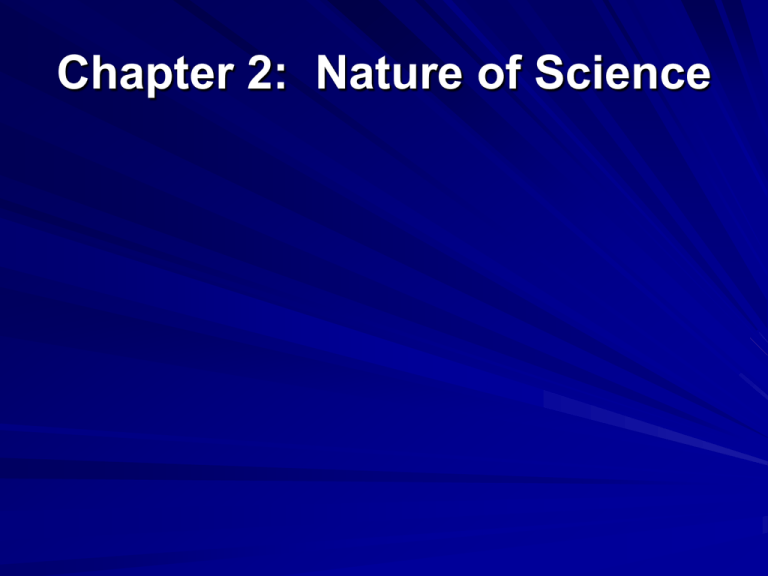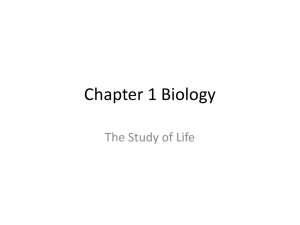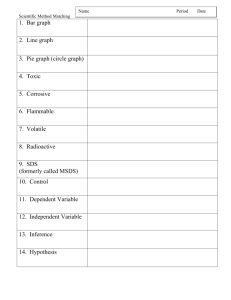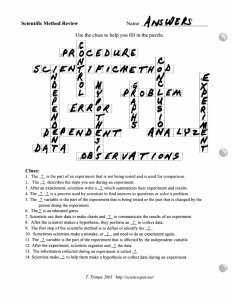Chapter 2: Nature of Science
advertisement

Chapter 2: Nature of Science Chapter 2.1 The Scientist’s Mind 3 Scientists, 3 Individuals Carl Sagan – a noted astronomer – popularized science through books and TV. Enriqueta Barrera became interested in local geology while taking walks. Now the director of Geology at National Science Foundation Evan Forde – 1st African American in the Alvin (submersible sub.) All 3 scientists became Earth Scientists due to curiosity Different lives common Goals Scientists will teach research in labs or out in nature, on or in oceans. Scientists look at the world in both logic and curiosity. Qualities of Scientific Thinking Scientists are observant they make predictions based on evidence (materials or data that can be measured and tested to verify a prediction) Hypothesis a tentative explanation for an observation of phenomenon Must be skeptical they question long-held assumptions and try to prove or disprove ideas Technology is the practical application of science to meet human needs. The object of scientific study is to understand the natural world. Chapter 2.2 Scientific Methods of Inquiry Creativity plays a large role in science along with logic Being able to test ideas with experiments is the key to much of science How scientists approach questions Scientific Inquiry - which involves observing, asking questions, forming a hypothesis, gathering data testing the hypothesis, and sharing what has been learned Peer Review and Scientific Journals After the experiment the new knowledge needs to be shared with and tested by other scientists To share the knowledge Scientific Journals are used If the experts agree the paper has merit, it my be published If the experts feel the scientist has not done enough to prove her point it is not published and sent back with suggestions Importance of testing Ideas Some advances that look promising fall short when tested – E.g. cold fusion H+H = He Scientific Theories and Laws Theory is an explanation of observable events or facts for which no exception has been found Theories rise and fall from favor and new information comes to light. Scientific law – a re generalizations about how the natural world behaves under certain conditions – No exceptions have ever been found Chapter 2.3 Scientists Tools Geology Rock hammer used to collect specimens in the field Soil augers – pulls up a sample of soil Crushers – to pulverize materials to study Range finders – distance Seismographs – to determine composition of rock below ground Tools to study Sky and Stars Meteorologist – Thermometers – Arco vane – wind speed and direction – Radar and satellites Astronomer – Telescopes - light, radio, x-rays, infrared Tools with many uses Computers and satellites have revolutionized earth science






